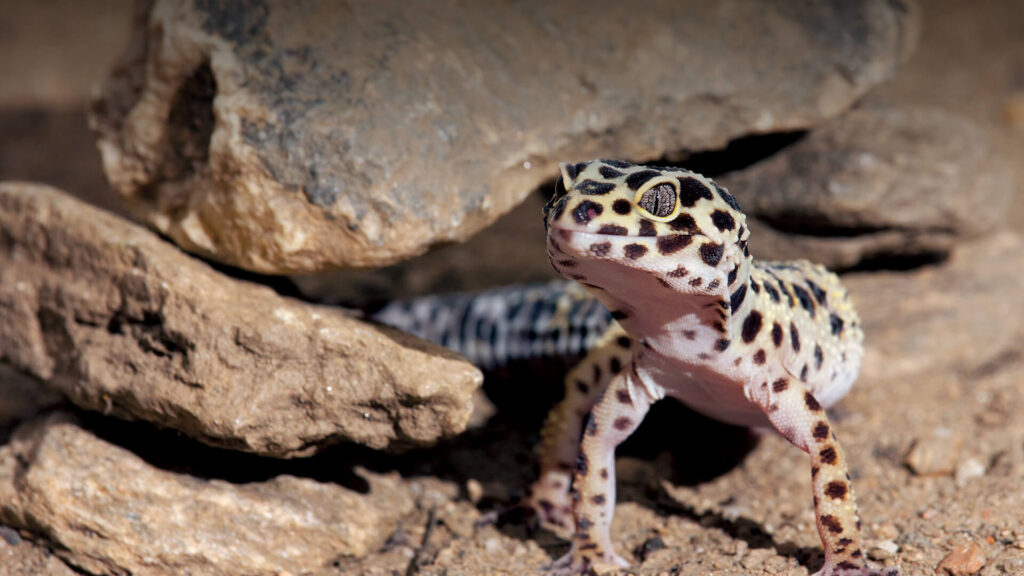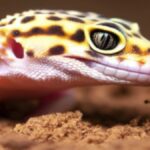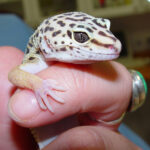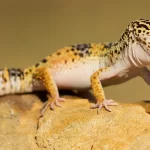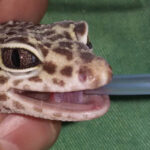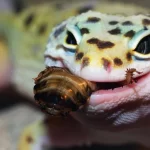Leopard geckos are naturally found in South Asia ranging from India, through the desert parts of Pakistan up to parts of Afghanistan and Iran. These areas are well known for their harsh, diverse deserts, but ranges from typical desert areas to more savannah-type areas.
Leopard geckos are naturally found in the desert parts of Pakistan extending into the southern parts of Afghanistan and Iran, and the northern parts of India.
The South Asian deserts consist of multiple series’ of mountains and low lying areas. The desert surface is covered with a wild maize of high and low sand dunes and ridges, separated by sandy plains and low barren hills.
The ground consists of various soil types namely, red soils, brownish-grey soils, red and yellow soils, saline soils, shallow weathered soils and soft loose soils. All these soils are predominantly coarse-textured, well-drained and calcium-bearing.
The Thar desert – an example of the natural habitat of Leopard geckos. Image GFDL (CC BY-SA 3.0)
South Asia’s seasons are at opposite times to those in the southern hemisphere. June to August is summer; September to November is autumn; December to February is winter, and March to May is spring.
Starting to increase after winter, daylengths are at their longest in June (about 12 hours and 50 minutes). The shortest days are in December and January (11 hours and 30 minutes).
The annual rainfall of the South Asian desert areas is generally low of which the most occur from July to September. May and June are the hottest months of the year, with temperatures rising up to 50 °C / 122 °F. During the winter months (December to February), the temperature ranges between 5 and 10 °C / 41 and 50 °F. Frost is frequent.
Desert vegetation is mostly herbaceous or stunted scrub with drought-resistant trees seen here and there.
Leopard geckos in their natural habitats
Wild Leopard geckos are still in existence today. By studying them in their natural environment one can get a better idea of how to keep them as pets.
Leopard geckos are adapted to rocky or scrubby areas which allow better shelter and protection. To avoid the hot temperatures, they will hide and sleep during the day and only come out at night. Another way to avoid warm temperatures is to hide away in tunnels and holes under the sand where it is a little moister and the temperatures are cooler. Also see Leopard gecko hide areas and hide boxes for more information.
Their yellow-brown colouration, spotted appearance and small size help them to blend in with the colours and obstacles of their environment. To protect themselves from other Leopard geckos and predators such as snakes, birds and mammals, Leopard geckos can put up threatening acts and can bite. By opening their mouths, raising their heads, inflating their bodies and lifting themselves up from the ground, a Leopard gecko can make him/herself look larger and more dangerous than they really are. Leopard geckos can also vocalise to fend off predators.
Leopard geckos do not need a lot of food and water to survive. Being able to store fat in their tails, they can also go long periods without food and water. In nature, Leopard geckos will eat anything that is alive and small enough for them to overpower and consume. This includes a variety of insects such as crickets and grasshoppers, spiders, centipedes and small scorpions. Leopard geckos will either drink water as rain or condensed droplets or absorb it through the food they are eating.
Because of high egg hatching failures and mortalities among baby and juvenile Leopard geckos, females will lay eggs over several periods during the breeding season. Eggs will be deposited in moist areas, underground to avoid harsh temperatures. Babies will hatch during late spring / early summer where the temperatures are warmer, insects are more abundant and there are better chances for rain.
References
Leopard geckos 101 is a free, informative website helping to improve the quality of pet Leopard geckos. If you found value in any of its content, please consider making a donation. Also see the other ways to support Leopard geckos 101.
Please help other Leopard gecko owners by using the buttons below to share this article on your favourite social media platform…
Previous environment articles

